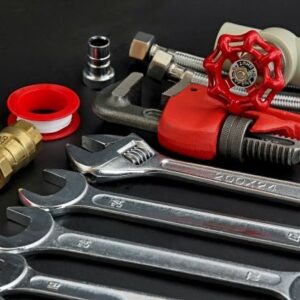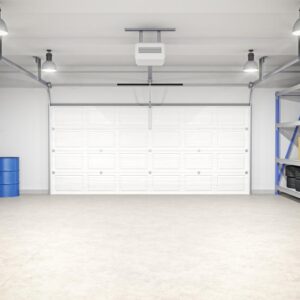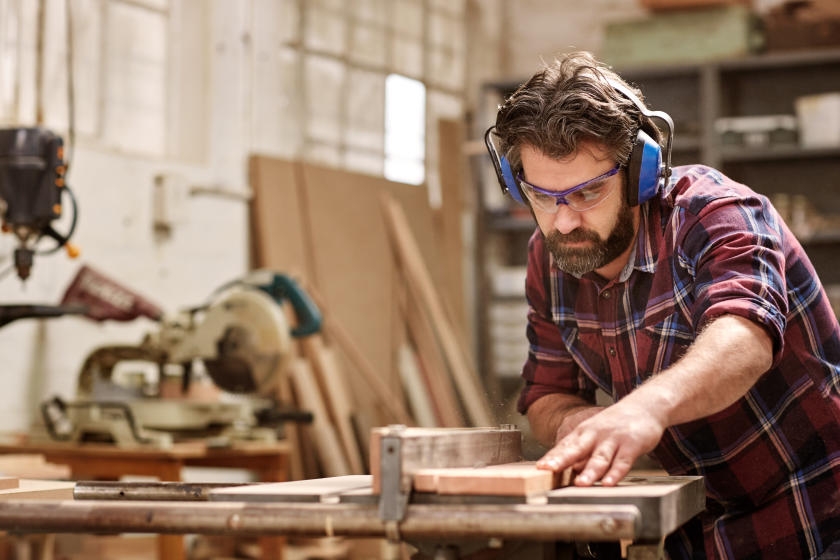Power tools offer precision, speed and convenience when completing home improvement projects. To get the most out of your power tools and to avoid injury, your tools must be used and maintained properly. So whether you’re a seasoned professional or a beginner, knowing the rules for proper maintenance and use are essential.
-
Maintain Your Tools
Electric drills, saws, sanders and nailers, etc., need routine maintenance for efficient and safe operation. Because of their mechanical and electrical parts, power tools are more susceptible to the problems caused by poor maintenance and dust and debris accumulation.
Dust and grime can cause your power tools to malfunction. A power tool that doesn’t operate correctly has the potential to cause injury. Wipe your tools clean with a rag after every use and then store them. Periodically, do a deep cleaning with a damp cloth. Get into exhausts and intakes and other hard-to-clean areas by using cotton swabs, lightly swabbed with machine oil, or other slender tools.
Helpful Tip
Use an air compressor or a can of compressed air to blow air into tool vents and crevices to remove dirt and dust from inside tools.
Routinely, inspect your power tools for any signs of wear or damage. Pay special attention to power cords. If you see frayed insulation or exposed wires, have the cord repaired or replaced immediately by a professional, unless you have the expertise to do it yourself. Damaged power cords can potentially lead to injury from electric shock or can cause a fire. Also, check the cord’s prongs to see if they are bent or loose. If any are, repair or replace them.
Safety Alert!
Always unplug electric tools when cleaning them or making any repairs to avoid the danger of electric shock or accidental startup. It’s also a good practice to unplug them when not in use.
Keep your tools protected from dust, moisture and other adverse conditions by storing them properly after use. Keep them in their original cases if possible, or tuck them away in storage drawers or tool chests, preferably in a garage or basement with a moderately controlled climate. This not only keeps them protected, it also keeps them organized so you can easily find the tool you need when you need it.
Helpful Tip
Remember to keep instruction manuals for all of your tools. They are provided to you by the manufacturer so that you can safely and competently operate your tools. They also have valuable information on how to care for the tool, find replacement parts and other important pieces of information. Keep manuals either in a toolbox drawer or a cabinet in your workspace/storage area so that they are readily available.
Keep blades, bits and other attachments sharp and in proper working condition. Replace dull blades or heavily used bits that look compromised. Pay attention to how your tool operates, and look and listen for any strange noises or other indications that something isn’t working correctly (i.e., the tool rattles, wiggles, etc.).
Helpful Tip
Read your tools’ instruction manuals and note when they suggest sharpening and maintaining your tools. Start a calendar in your workshop to keep track of when maintenance checks were performed on your tools.
-
Keep Workspace Clean and Organized
Your workspace, whether it’s in a workshop or garage, should be organized and free of clutter, dirt and debris. Organization means less chance of tripping over power cords, cables, and other tools and materials. Also, knowing where a tool is and having it within easy reach can make for efficient job completion.
Regularly sweep up and mop away dirt, dust and debris to keep it from finding its way into your tools and to make cleanup easier.
Safety Alerts!
Keep your workspace well-ventilated, especially when sawing or sanding. Open windows or doors or use a box fan as an exhaust to remove dust and particles from work areas.
Wear dust masks or respirators when doing extensive sawing and sanding.
Keep flammable materials like fuels, solvents and any rags used for these products away from where you’re working. All it takes is a spark to start a fire and cause serious injury. The potential for fire is also why it’s important to keep sawdust and debris, which is easily ignited, cleaned up.
Since you’re working with tools that may need electricity to function, it is important to keep your workspace dry. Don’t stand in water or on damp floors, and do not work in the rain when using electrical tools. You must also keep your hands and tools dry. If there is the potential for any amount of moisture in your workspace, be sure you plug your tools into a GFCI outlet.
Be sure your workspace is well-lit. Use high-wattage work lights or install high-wattage overhead lighting in your workshop. The better you can see what you’re doing, the less chance there is that you might accidentally hurt yourself.
Helpful Tip
Cut down on distractions in your workspace. For example, if you are using a tool such as a circular saw or similar tool, turn off music and cell phones or anything else that may take your mind off the task at hand.
-
Always Use Safety Equipment
After years of working with power tools, many people start to let safety rules slide a bit. Safety glasses or goggles should be used at all times when working with power tools. Ear protection should be used when you’re operating a loud tool. Also, don’t forget to wear respiratory protection if there are excessive amounts of dust and particles in the air. Wear steel-toed work boots and hard hats when it is appropriate.
Safety Alert!
Do not wear loose clothing, over-sized gloves, jewelry or any accessories that can get caught within the spinning blades or other moving parts of a power tool. In addition, long hair should be pulled back.
Power tools are built with safety devices like guards and power switches that ensure safe operation. Use them. These guards protect fingers and keep clothing and other items from being exposed to belts, gears, chains and blades. Never remove safety guards when a tool is being used. For example, a portable circular saw is equipped with an upper guard which covers the entire blade of the saw. A retractable lower guard covers the teeth of the saw, except where it makes contact with work material, and a lower guard automatically returns to the covering position when the tool is withdrawn from the work material. These guards are all required for safe operation.
Most power tools are equipped with a constant-pressure switch or control that shuts off the power when pressure is released. Check to make sure that each tool’s operating control/switch is functioning the way it should be before you begin to use it.
Helpful Tips
It is a good idea to have a first-aid kit nearby at all times when you’re working with power tools.
Use appropriate safety accessories to help you, where applicable. For example, when using a table saw, employ push sticks or push blocks to guide material through the saw and keep your hands away from the blade. Many tools have these kinds of accessories. Read up on devices that can help you do the job better and more safely.
-
Use the Right Tool for the Job
Always use the right tool for the job at hand. Using a tool in an application for which it was never intended can lead to accidents and injury. Be familiar with the tool you’re using. Read all instructions. Test it out; know how it works and how it responds to materials and conditions during its operation.
That’s it! Now you’re equipped with the proper maintenance and safety instructions for using your tools.
Project Shopping List
Here’s what you’ll need to complete this project successfully.
- Rag
- Cloth
- Cotton swabs
- Slender tools for cleaning
- Machine oil
- Air compressor
- Storage drawers or tool chest
- Mop
- Box fan
- GFCI outlet
- High-wattage work lights
- Safety glasses or goggles
- Ear protection
- Steel-toed work boots
- Hard hat
- First-aid kit












